Handmade plaster models [1]
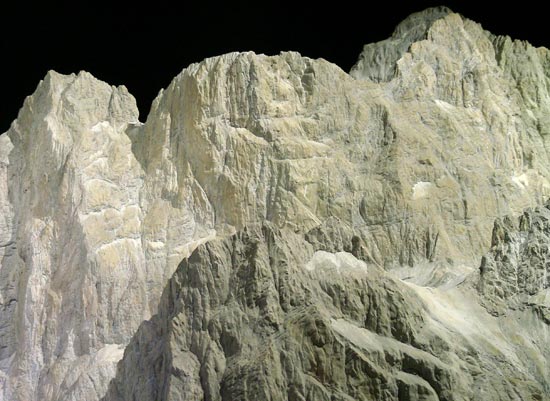
Naturmuseum Winterthur
Plaster models can be produced using different techniques.
Most common is the layer method. Using a contour map as starting point, layers of plywood are cut along contour lines and piled up. The contour lines are copied to the plywood sheets and then traced with a jigsaw. The thickness of each plywood plate has to correspond to the contour interval. Then the steps between the different layers are filled using a ductile material. From this first model a plaster cast is made. Then this plaster model is formed to the final shape and serves as master model from which other casts can be made. To make plaster casts, a gelatine-like material is used. The master model has to be covered with a separating compound, as for example shellac, to ease the separation of the cast from the master model.
Using this method, several moulds have to be made, which requires a lot of work. Furthermore, the number of possible casts of the master model is limited to about half a dozen.
The classic plaster models of the ancient masters of model making were made using this method. Eduard Imhof (1895–1986) started with a negative layer model, so he could abbreviate the procedure saving one mould. [2] The layer method is the exact way to reproduce real terrain, but it requires a contour map.
Before the existence of contour maps other methods were used to create plaster models. The elevations of several points were measured in the real terrain and then represented using nails of different lengths that were hammered on a wooden base plate. The gaps between the nails where filled manually using different materials. From this first model several casts could be made. Models made that way are far less exact than models created by the layer method.
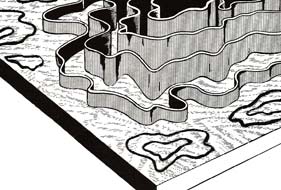
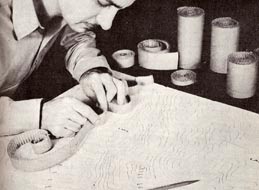
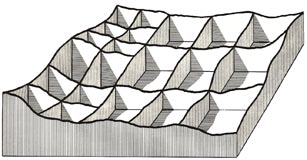
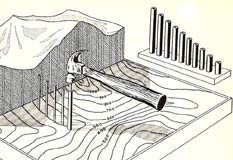
Egg-crate method |
Nail or peg method |
In the USA, two other methods employing plaster were also used. For the construction of the mother model, cardboard instead of wood was used as the main material. The ribbon-method used corrugated cardboard to represent contours and the egg-crate method was based on a partition of the model in squares. With the egg-crate method the accuracy of the models can be easily adjusted. These two methods were very easy and fast to execute. They are not as exact as the layer method but were used by the military to provide a quick and accessible panoramic view of an unknown terrain to combatants like bomber pilots. [3]
Watch a short movie showing the classic layer technique as it was used by most Swiss artists, demonstrated by Toni Mair (duration 13 min, 20MB).
